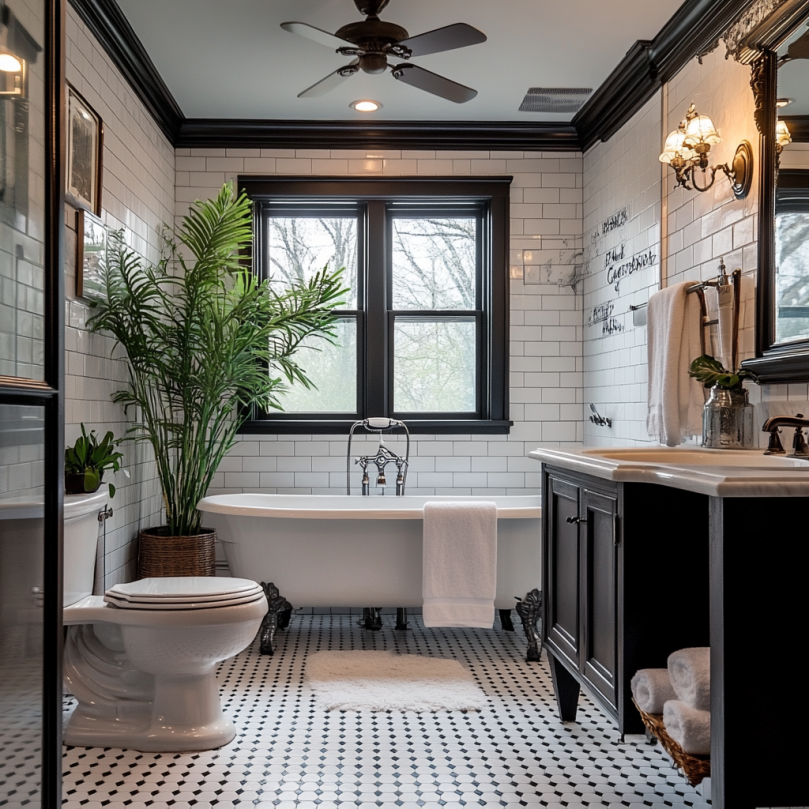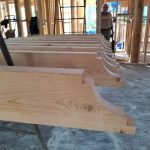
Renovating an Older Home: Bathroom Remodel Tips
Renovating an Older Home: Bathroom Remodel Tips for Success
Renovating an older home: bathroom remodel tips are essential when modernizing charm-filled spaces that often come with outdated plumbing, structural quirks, or historic preservation concerns. Older homes often come with vintage charm, detailed craftsmanship, and sturdy materials—but when it comes to bathrooms, what was once considered cutting-edge can now be outdated, inefficient, and even unsafe. Renovating an older home’s bathroom requires a careful blend of preservation and innovation.
Whether you’re updating plumbing, uncovering hidden issues, or refreshing old design elements, this guide covers key bathroom remodel tips specifically for older homes.
Challenges Unique to Older Home Bathrooms
Renovating bathrooms in older homes comes with its own set of complications that modern homes rarely face:
- Outdated plumbing systems
- Electrical systems not up to code
- Structural concerns (e.g., wood rot, sagging joists)
- Non-standard sizes and layouts
- Hazardous materials like lead paint or asbestos
- Limited ventilation and poor insulation
Understanding these challenges upfront will help you plan, budget, and execute the remodel more effectively.
Step-by-Step Tips for Remodeling an Older Bathroom
Start with a Thorough Inspection
Before you do anything cosmetic, hire professionals to inspect:
- Plumbing lines for corrosion or leaks
- Electrical wiring for outdated panels and unsafe connections
- Joists and subflooring for rot or sagging
- Signs of mold or water damage
- Presence of hazardous materials like lead or asbestos
This will inform your budget and determine whether remediation or updates are required.
Upgrade the Plumbing System
Older homes may have galvanized steel or cast iron plumbing, which can be rusted or clogged. During the remodel, consider upgrading to modern materials like:
- PEX piping (flexible, corrosion-resistant)
- Copper piping (durable and long-lasting)
Upgrading now prevents costly leaks later and is a key part of renovating an older home: bathroom remodel tips.
Rewire to Meet Current Codes
Bathrooms in older homes were not designed for today’s electrical demands. Update with:
- GFCI outlets
- Dedicated circuits for hairdryers and heaters
- Adequate lighting and exhaust fan wiring
This ensures safety and function, another important part of renovating an older home: bathroom remodel tips.
Preserve Historic Elements with Purpose
Don’t rip everything out—keep or restore vintage items like:
- Clawfoot tubs
- Hexagonal or penny tile flooring
- Original cabinetry or built-in storage
- Antique mirrors or light fixtures (rewired for safety)
These can become standout features in your remodel while preserving the home’s charm.
Work Around Non-Standard Sizes
Older homes often have non-standard door sizes, fixture spacing, or small room layouts. Custom vanities, tailored fixtures, or even wall-mounted options can help you maximize space.
Improve Ventilation
Many old bathrooms lack proper exhaust fans. Add:
- Energy-efficient ventilation systems
- Operable windows, if possible
- Moisture-resistant drywall to minimize future damage
This step is frequently included in professional advice on renovating an older home: bathroom remodel tips.
Consider Eco-Friendly and Aging-in-Place Features
If you’re investing in a full remodel, now is a great time to include:
- Low-flow toilets and faucets
- Walk-in showers with grab bars
- Anti-slip flooring materials
- Wider doorways for accessibility
These additions are modern upgrades recommended in many renovating an older home: bathroom remodel tips.
Budgeting Tips for an Older Home Remodel
Renovating older homes can lead to surprises. To stay on budget:
- Set aside 15–25% for contingencies
- Prioritize functionality and safety first (plumbing, electrical)
- Seek local historic preservation grants or tax credits if eligible
- Repurpose original materials when possible
Choosing the Right Team
Make sure your remodeling team is experienced with older homes. Look for:
- A contractor with historic renovation experience
- A licensed plumber and electrician familiar with code upgrades
- A designer who understands blending old with new
Communication and detailed planning are key to a successful outcome when following renovating an older home: bathroom remodel tips.
Smart Takeaways from Renovating an Older Home: Bathroom Remodel Tips
Alt Text: Renovated Vintage Bathroom with Modern Fixtures
Image Title: Charming Older Home Bathroom Remodel
Image Description: A blend of original architectural details (like clawfoot tub or vintage tile) with modern updates (like a sleek vanity or contemporary lighting).
Image Link: Charming Older Home Bathroom Remodel.webp
Renovating an older home: bathroom remodel tips help you embrace charm while solving hidden issues. With thoughtful planning, thorough inspections, and the right team, your updated bathroom can be both beautiful and functional. Prioritize safety, preserve historical character, and always budget for the unexpected.
Transform Your Historic Bathroom with Trusted Expertise
At Mazzamuto Construction, we believe great spaces start with thoughtful planning and skilled craftsmanship. Whether you’re exploring ideas or ready to build, our team is here to guide you every step of the way. Let’s bring your vision home—reach out for a personalized consultation today!
Frequently Asked Questions
1. What are the biggest risks when remodeling an older home bathroom?
Plumbing and electrical systems may be outdated or unsafe. Hidden issues like rot, mold, or asbestos are also common and can increase costs and timelines.
2. Can I keep some vintage fixtures during the remodel?
Yes, many homeowners choose to preserve clawfoot tubs, original tiles, or vintage lighting. Just ensure they’re safe and functional, especially with rewiring or re-plumbing.
3. How do I upgrade plumbing without destroying walls?
Where possible, use flexible piping like PEX that can be snaked through existing walls. Otherwise, plan for limited demolition and patching.
4. Do I need permits to remodel a bathroom in an older home?
Yes. Any changes to plumbing, electrical, or layout typically require permits and inspections. Local regulations vary, so always consult your building department.
5. Are there special codes for historic homes?
Yes. Some municipalities have preservation guidelines that limit structural changes or dictate specific materials. Always check with your local historic preservation office before starting.
Key Takeaways
- Older home bathroom remodels require extra planning and professional inspections.
- Prioritize upgrades to plumbing, electrical, and ventilation to meet modern standards.
- Preserve valuable vintage elements for character while improving functionality.
- Budget for surprises and partner with professionals experienced in historic renovations.
- Always check local codes and consider preservation rules and incentives.




